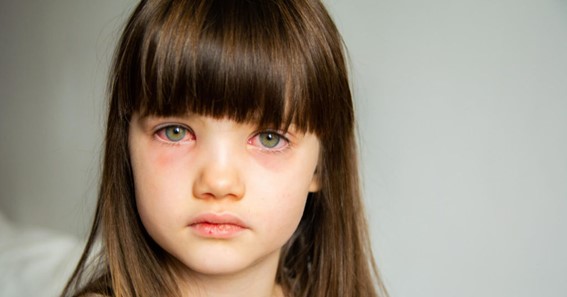Are you curious to know what is madras eye? You have come to the right place as I am going to tell you everything about madras eye in a very simple explanation. Without further discussion let’s begin to know what is madras eye?
Eye infections are common and can cause discomfort and inconvenience. One such eye condition is commonly known as Madras Eye, also referred to as conjunctivitis. In this blog post, we will explore Madras Eye, its causes, symptoms, and available treatments to help you better understand and manage this condition.
What Is Madras Eye?
Madras Eye, scientifically known as conjunctivitis, is an inflammation of the conjunctiva—the thin, transparent layer that covers the white part of the eye and lines the inner surface of the eyelids. It is a highly contagious condition that can affect one or both eyes.
Causes Of Madras Eye:
Madras Eye can have various causes, including:
-
Bacterial Infection:
Bacterial conjunctivitis is typically caused by bacteria such as Staphylococcus aureus, Streptococcus pneumoniae, or Haemophilus influenzae. It can spread through direct contact with contaminated hands, towels, or other objects.
-
Viral Infection:
Viral conjunctivitis is commonly caused by adenoviruses, which are highly contagious. It can spread through respiratory droplets or contact with infected surfaces.
-
Allergic Reactions:
Allergic conjunctivitis occurs due to an allergic reaction to substances like pollen, dust mites, pet dander, or certain medications. It is not contagious and often affects both eyes.
-
Irritants:
Exposure to irritants such as chemicals, smoke, or foreign particles can also cause conjunctivitis.
Symptoms Of Madras Eye:
The symptoms of Madras Eye may vary depending on the underlying cause. Common symptoms include:
-
Redness and Swelling:
The affected eye(s) may appear red and swollen due to the inflammation of the conjunctiva.
-
Itching and Irritation:
The eye(s) may feel itchy, accompanied by a constant urge to rub or scratch them.
-
Discharge:
There may be a watery or sticky discharge from the eye(s), which can lead to crusting and difficulty in opening the eyes upon waking up.
-
Sensitivity to Light:
The eyes may become sensitive to light, causing discomfort when exposed to bright light or sunlight.
Treatment And Prevention:
The treatment for Madras Eye depends on the underlying cause:
-
Bacterial Conjunctivitis:
Bacterial conjunctivitis is commonly treated with antibiotic eye drops or ointments prescribed by a healthcare professional. It is essential to complete the full course of treatment to prevent recurrence.
-
Viral Conjunctivitis:
Viral conjunctivitis is a self-limiting condition that usually resolves on its own within a week or two. Applying warm compresses and using lubricating eye drops can help alleviate symptoms. Consultation with a healthcare professional is recommended for severe cases.
-
Allergic Conjunctivitis:
Allergic conjunctivitis can be managed by avoiding allergens, using over-the-counter antihistamine eye drops, and applying cold compresses to reduce itching and inflammation. In severe cases, a healthcare professional may prescribe stronger medications.
To prevent the spread of Madras Eye, follow these preventive measures:
- Practice good hand hygiene by washing hands frequently.
- Avoid touching or rubbing the eyes.
- Use separate towels and personal items to prevent cross-contamination.
- Maintain clean contact lenses and follow proper hygiene practices.
Conclusion:
Madras Eye, or conjunctivitis, is a common eye condition characterized by inflammation of the conjunctiva. It can be caused by bacterial or viral infections, allergies, or irritants. Understanding the causes, symptoms, and available treatments for Madras Eye can help you manage the condition effectively. If you experience persistent symptoms or worsening eye discomfort, consult a healthcare professional for proper diagnosis and treatment. Remember, taking appropriate preventive measures is essential to minimize the spread of Madras Eye and maintain good eye health.
Empower Your Knowledge By Visiting Techyxl
FAQ
What Is The Reason For Madras Eye?
It is caused either by a bacteria or by a virus. Madras Eye infection spreads rapidly among people. It spreads through secretions from the eye. One of the most common habits of people suffering from Conjunctivitis is touching their eye.
Is Madras Eye Good Or Bad?
If treated early, patients will get back 100 per cent of their vision. But even after the symptoms vanish, it’s best to consult a doctor again since the cornea normally gets affected within seven to eight days. Most people don’t and that can be dangerous.”
How Many Days Will Madras Eye Last?
The infection will usually clear up in 7 to 14 days without treatment and without any long-term consequences. However, in some cases, viral conjunctivitis can take 2 to 3 weeks or more to clear up.
What Is The Fastest Way To Cure Madras Eye?
Lifestyle and home remedies
- Apply a compress to your eyes. To make a compress, soak a clean, lint-free cloth in water and wring it out before applying it gently to your closed eyelids. …
- Try eye drops. Nonprescription eye drops called artificial tears may relieve symptoms. …
- Stop wearing contact lenses.
I Have Covered All The Following Queries And Topics In The Above Article
What Is Madras Eye Infection
What Is The Symptoms Of Madras Eye
What Is Mean By Madras Eye
What Is Madras Eye Called In English
What Is The Reason For Madras Eye
What Is Madras Eye Symptoms
What Is The Medicine For Madras Eye
What Is Madras Eye In Tamil
What Is Meant By Madras Eye
What Is The Fastest Way To Cure Madras Eye?
What Is The Solution For Madras Eye
What Is Madras Eye
How long will Madras Eye last
What is Madras eye?

